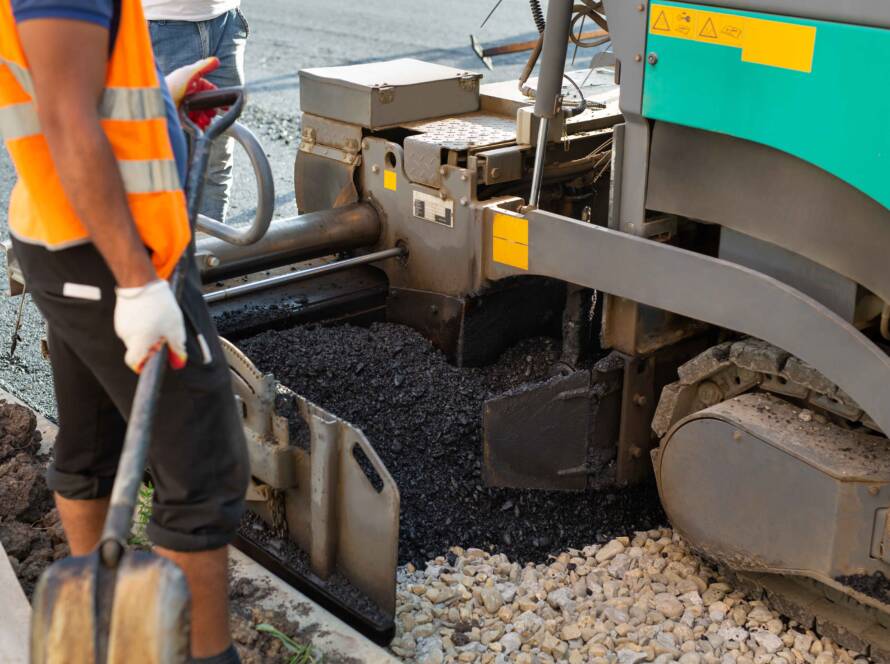When you think of roads, you might picture asphalt, traffic, tires — but what you don’t see (or hear) tells an equally important story. Modern road surfacing is evolving to be quieter, greener, and more in harmony with the environment and surrounding communities. In this post, we’ll explore the latest innovations in low-noise and eco-friendly paving, why they matter, and how they’re being put into action today.
1. The Problem: Noise, Pollution & Environmental Strain
Road Noise: More than a Nuisance
- Tire-road contact is one of the biggest contributors to urban noise pollution, especially at speeds above 30–40 km/h.
- Noise affects human health — stress, sleep disruption, and impacts on wildlife.
- Communities near highways, major roads, and dense urban areas are often the hardest hit.
Material Footprint: Carbon, Resources & Waste
- Traditional asphalt production is energy intensive and contributes to greenhouse gas emissions.
- Mining and quarrying for aggregates draw heavily on natural resources.
- Waste from road maintenance and removal adds to landfill unless recycled properly.
These pressures demand a shift in how we conceive and build roads.
2. Innovations in Low-Noise Road Surfacing
Here are some of the breakthrough technologies and techniques making roads quieter:
- Porous or open-graded asphalt
Designed with more voids and interconnected air pathways, these surfaces help absorb sound and reduce tire noise. - Surface texture engineering
By optimizing microtexture and macrotexture (tiny and large grooves on the surface), engineers can reduce noise while maintaining grip and water drainage. - Elastic or polymer-modified asphalt mixes
These formulas better dampen vibrations created by tire impact and flex under load, which helps attenuate noise. - Hybrid systems
Combining bound and unbound layers, or placing noise-absorbing layers under the wearing surface, can create a “quiet sandwich” effect.
3. Green & Sustainable Surfacing Techniques
Reducing the environmental impact of roads is now just as important as making them durable and safe. Some key strategies include:
- Recycled & reclaimed asphalt pavement (RAP)
Using reclaimed asphalt not only diverts waste from landfills but also reduces the need for new raw materials. - Warm-mix and cold-mix asphalt technologies
These methods lower the temperatures required for mixing and laying, significantly reducing energy use and emissions. - Bio-modified binders & alternative materials
Researchers are experimenting with natural oils, recycled plastics, and bio-based additives to replace some portion of traditional bitumen. - Permeable or permeable rigid pavements
These allow stormwater infiltration, reducing runoff that can cause erosion or flooding, and can support better water cycles in urban design. - Smart maintenance & life-cycle planning
By designing roads with modularity or targeted repair in mind, the full life-cycle carbon cost is reduced.
4. Benefits on the Ground (and in the Air)
When low-noise and eco-friendly surfacing is done right, communities feel it:
- Quieter neighborhoods
Reduced traffic noise improves quality of life, making streets more pleasant, especially for walking, cycling, and outdoor living. - Lower emissions & carbon footprint
Greener materials and processes support climate goals and municipal sustainability agendas. - Improved drainage & reduced flooding
Permeable surfaces help absorb rainwater, reducing stress on stormwater systems. - Health & environmental uplift
Less noisiness, better air quality, and safer streets all contribute to healthier communities. - Market differentiation & reputation
For contractors and municipalities, offering advanced surfacing gives an edge in bidding and public perception.
5. Challenges & Considerations
Implementing these advanced surfaces isn’t without its hurdles:
- Higher upfront costs
Some eco or noise-reducing mixes cost more initially, though they often pay off over time. - Design trade-offs
Balancing noise reduction, durability, skid resistance, and drainage can require careful engineering. - Maintenance considerations
Some porous or novel surfaces may require more specialized maintenance to avoid clogging or wear. - Local climate & conditions
What works in a temperate area may need adjustments in tropical, cold, or highly variable climates.
Putting It Into Practice
Here’s how a modern surfacing project might unfold with these principles in mind:
- Assessment & goals
Determine ambient noise targets, environmental objectives, and budget constraints. - Material selection
Choose mixes that incorporate RAP, warm-mix asphalt, polymer modifications, or bio-binders. - Surface design
Engineer texture, gradation, and thickness to optimize acoustics, drainage, and strength. - Construction & compaction
Use precise methods to control voids, density, and layer bonding. - Maintenance planning
Anticipate cleaning, re-dressing, and possible treatments to prolong performance.
By integrating noise and environmental goals from day one, roads of the future can be resilient, quiet, and sustainable — not just functional.


